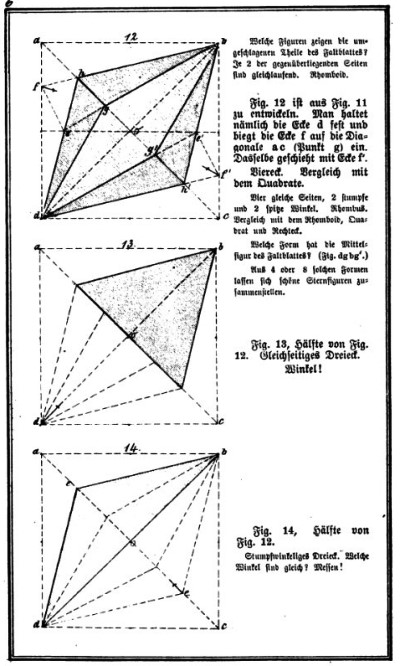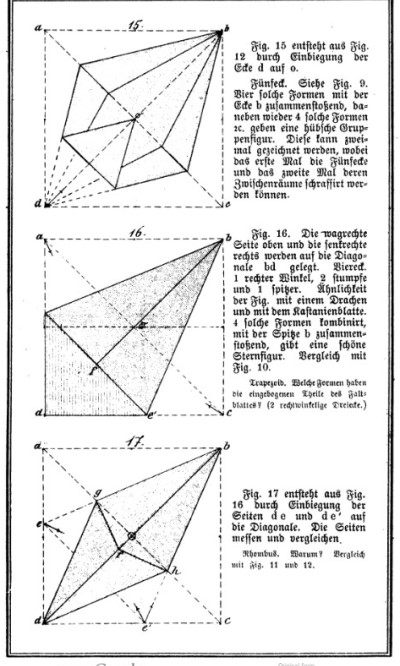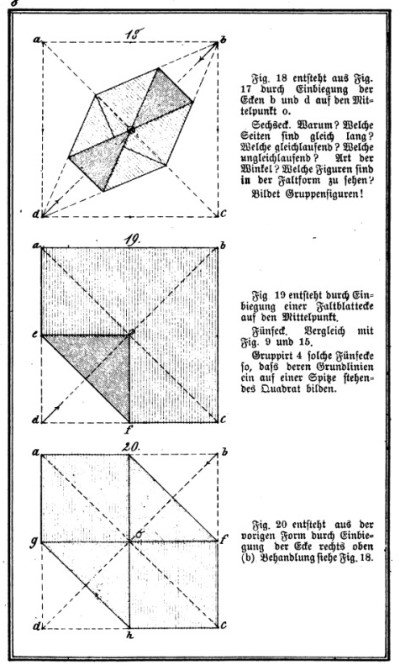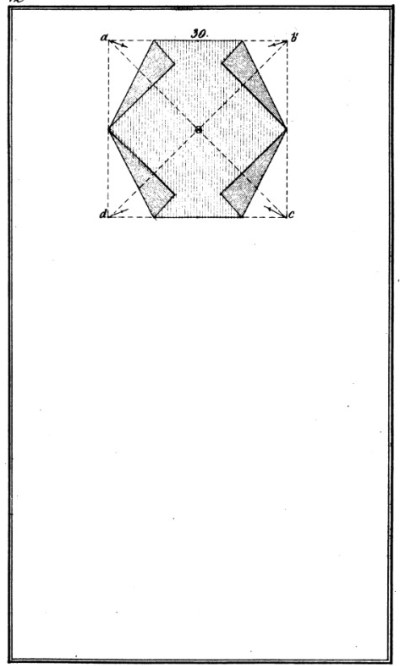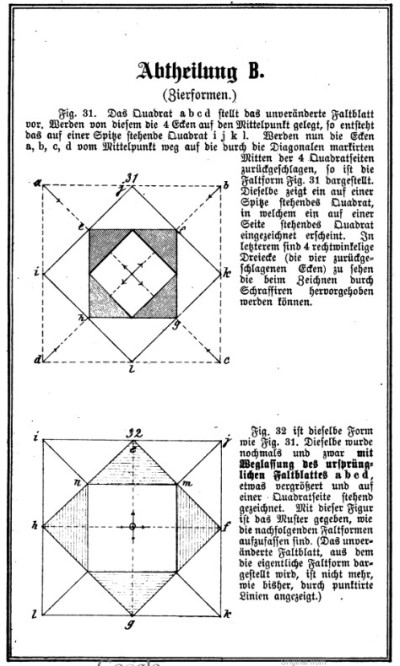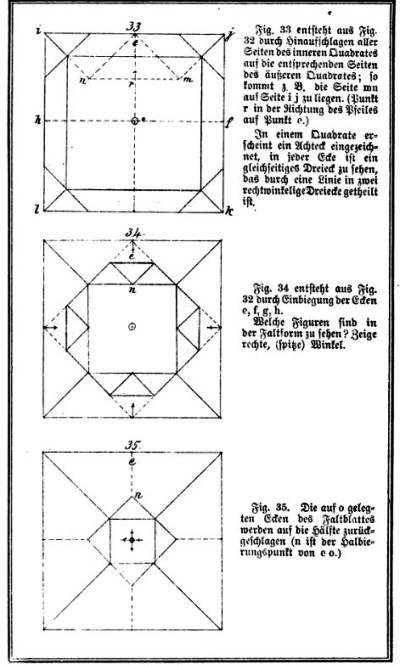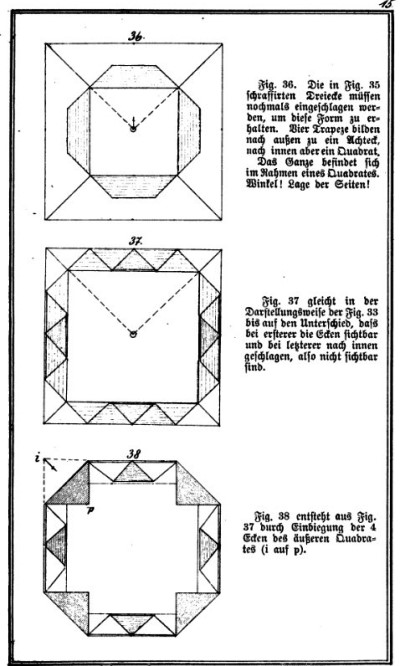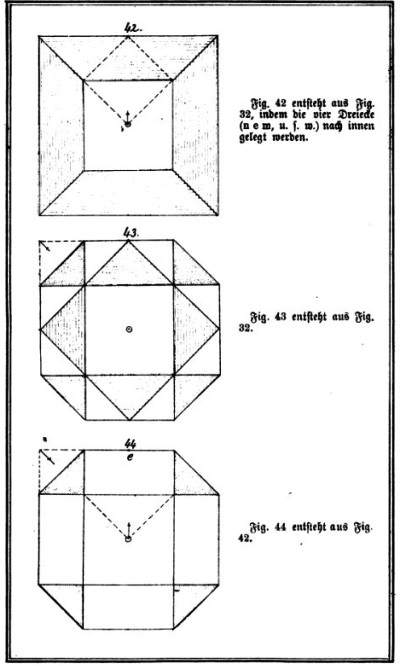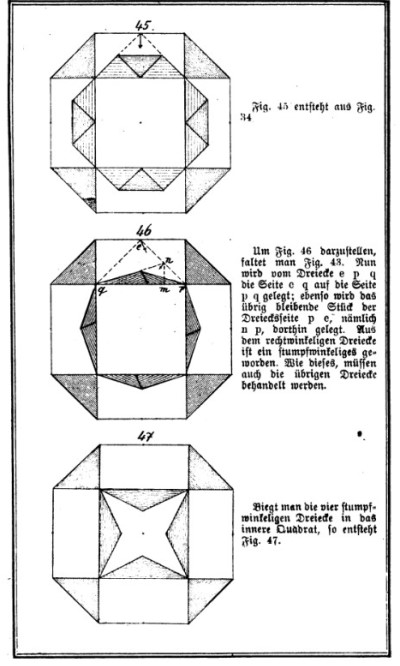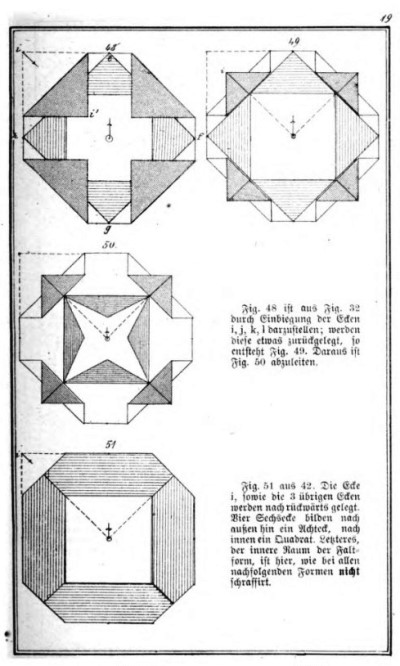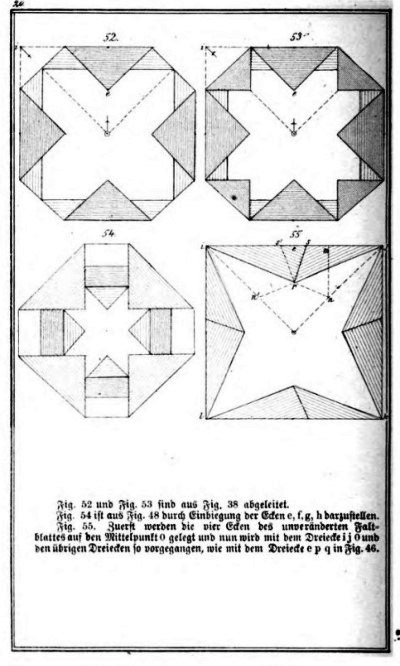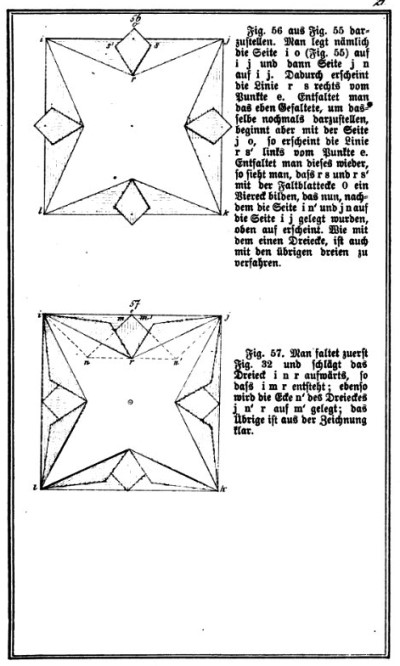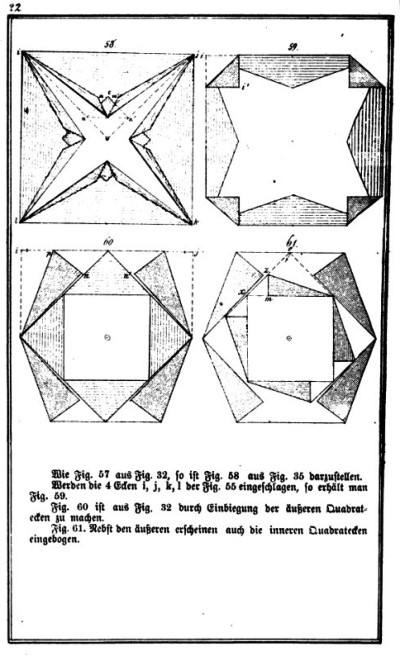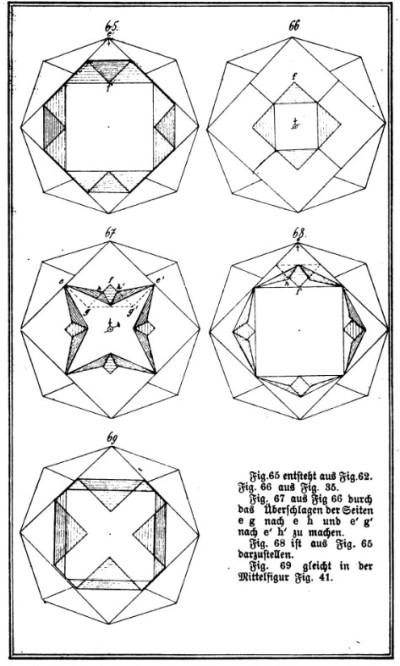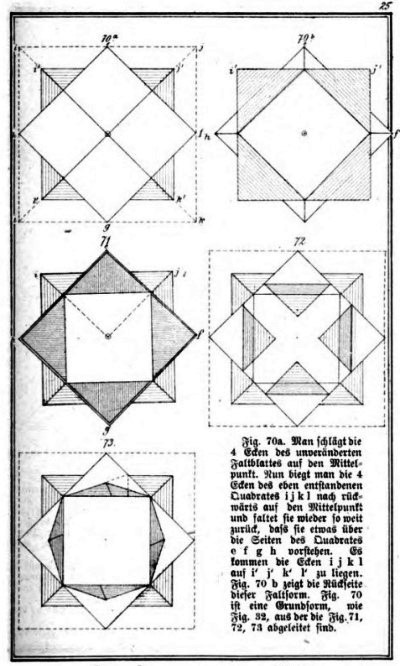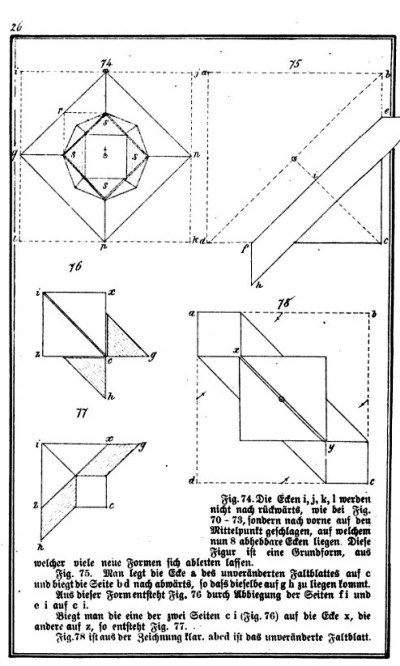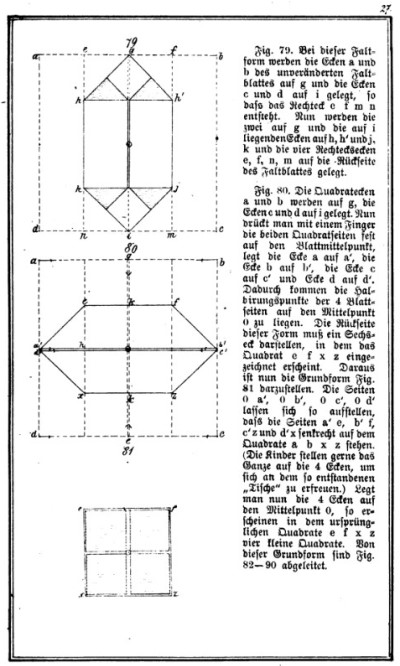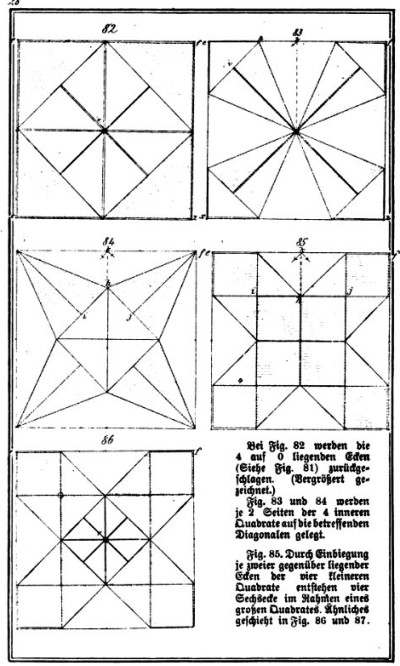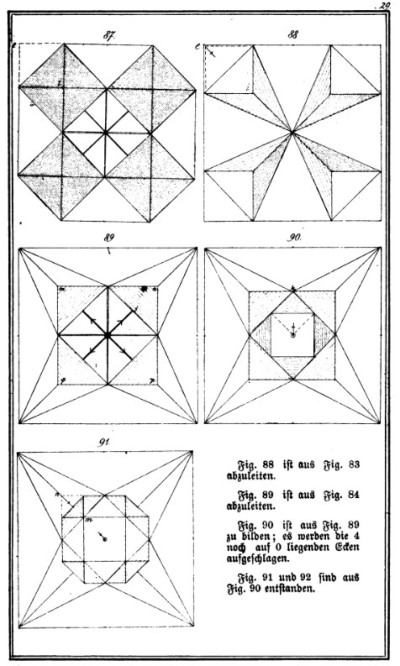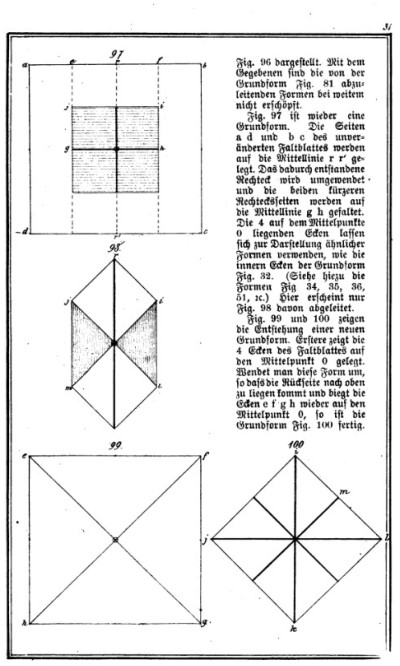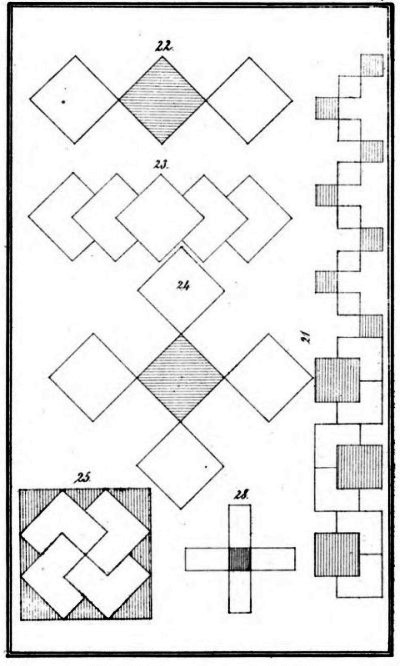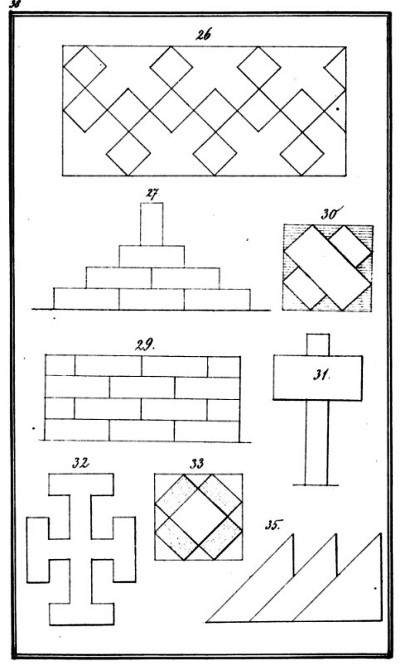| The Public Paperfolding History Project
Last updated 11/10/2025 x |
|||||||
| Die Formenarbeiten Part 3: Das Falten by Alois Fellner, 1875 | |||||||
'Die Formenarbeiten' was a series of 7 booklets about Froebelian occupations by Alois Fellner published by Verlag von A. Pichler's Witwe & Sohn in Vienna during the years 1874/79. Booklet 3, published in 1875, is about Das Falten. The work contains an Introduction and sections on: Section A: Erkenntnisformen / Geometric Folds Section B: Folds of Beauty, an unusual feature being that the outline of many of these forms is not square. Section C: Combinations (ie, according to the Introduction: 'forms that arise from the fact that several similarly folded sheets are combined to form a new whole'. These designs are created by combining the basic folded forms from Section A and are intended to be made as these forms are first encountered.) The author states that 'folding should be carried out in the 3rd and 4th grades'. ********** The author seems to see folding not as an end in itself but a stepping stone to the drawing of forms. There is no sense that pupils are to be encouraged to create their own designs from the groundforms. Rather the pupils are to copy exactly what the teacher folds. However, this does not apply to the Combinations activity. ********** The Introduction recommends that, roughly translated: 'As a teaching aid (for the teacher) a square shaped sheet made of two-colored paper with a side length of approximately 3-4 dm is necessary. As a learning aid (for students) square-shaped sheets made of fine tissue paper or stiff, two-coloured paper with a side length of approximately 1 dm are used.' (Note that 1dm is 10cms) and 'Tissue paper sheets are better suited for school use than the others because they present students with less difficulty when folding, and, when held as finished shapes against the light, show the details of the folded shapes so clearly that even weak students can grasp the graphic representation.'
The work includes an advert for suitable squares of paper sold by the publishers:
********** A full copy of the work can be accessed online here. **********
**********
********** Analysis Section A: Erkenntnisformen Picture 12 shows How to Construct an Equilateral Triangle Many of these designs are taken from Koehler's work
********** Section B: Schonheitsformen Figures 32 to 74 show designs developed from one side of The Double Blintz Basic Form, an unusual feature being that the outline of many of these forms is not square. Figure 81 is the Windmill Base and all the other forms are developments of it. Figure 35 is The Diagonal Cross Figure 94 is The Sunburst Figure 96 is The Flower-Pattern Photo Frame Figure 97 is (a version of?) Koehler's Groundform Figure 100 is again The Double Blintz Basic Form, which is turned into The Cross (Figure 105), and some variations, without going directly through The Triple Blintz Basic Form. **********
********** Kombination - The Combining of Folded Shapes ie, according to the Introduction: 'forms that arise from the fact that several similarly folded sheets are combined to form a new whole'. These designs are created by combining the basic folded forms from Section A and are intended to be made as these forms are first encountered. Picture 51 is not mentioned in the text but appears to be a Fold of Beauty derived from the Windmill Base.
********** |
|||||||











